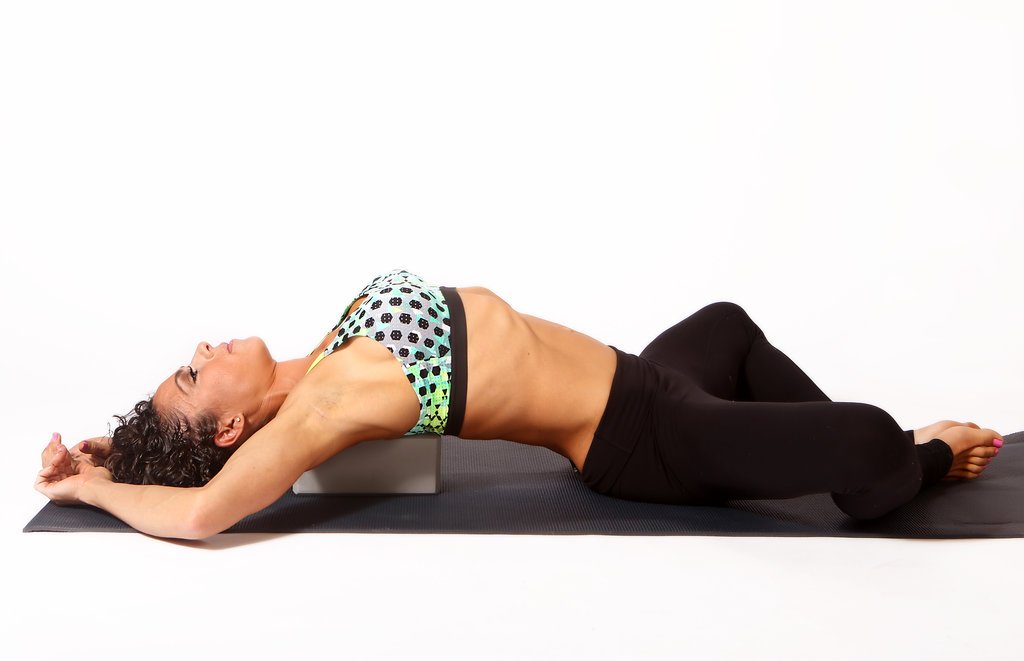4 Great Upper Back Stretches
Many of us carry tension in our upper back and shoulders. This may be caused by living in a technological world, working at a computer, being a student, having a little one, doing all strength training with no stretching, having a physically demanding job or the all pervasive mental/emotional stress that we experience day to day. In this blog post I will share my 4 favorite ways to open up the upper back and create more space in the ribcage. This helps you breath better, move better and ultimately feel better.
1) Doorframe Pec Stretch
Find a doorframe to use and bring your arm to a 90 degree angle. Place your forearm vertically along the doorframe. Keeping your head and neck in a neutral position, slowly lean your body forward to find a stretch in the front of your chest. You can move your forearm slightly higher and lower to find different areas of tension. Remember to keep your head facing straight ahead and breathe deeply. If you want you can do both sides at the same time as shown below.
2) Rabbit Pose
This one is a little funky but really gets that spot in between your shoulder blades. Sitting on your knees, reach your arms back and wrap your hands around your heels. Then tuck you chin and lower the TOP of your head to the ground in front of your knees. Be careful not to press weight into your neck as you lift your hips up towards the sky. Then pull on your heels with your arms to open up space between the shoulder blades.
Breathe into the back of your heart and stay for a few rounds of breath. Come out of this position slowly by bringing the heels back to the hips and pause in an upright position to prevent lightheadedness.
3) Lay on a Block (of Foam Roller)
This move is amazing for counteracting forward posture, aka slouching! I prefer using a yoga block over a foam roller because it allows the pecs in the front of the chest to open as well as creating extension in the spine and ribcage. However, if you do not have a yoga block feel free to use a foam roller.
Simply sit on the floor and place the block on the ground behind you. Then lower yourself back so that the block fits between your shoulder blades, behind your heartspace. Relax your arms open to the sides or overhead and your head back to the floor. If that is too much for your neck use a pillow or cushion to support your head. Stay in that position for a minute or longer. I aim for at least 2 minutes because that is when then fascia, or connective tissue, starts to release tension. Plus it just feels amazing! You can keep your legs straight, you can bend your legs or butterfly them as shown below.
4) Open Books
Lie on your side with your legs stacked one on top of the other at a 90 degree angle and your arms stacked reaching out long. Keep your hips still as you reach your top arm up and over, twisting your spine and opening through the ribcage, creating a capital T shape with your arms. Repeat this movement 6-10 times on each side.
How Chiropractic Helps
If you find you have a chronically tight upper back I would highly recommend chiropractic care in addition to doing these stretches daily. A chiropractic adjustment can target the exact area of you spine that is causing restriction and help to facilitate more movement. Not only does this help you feel better but it enhances the function of your nervous system too. Inside of your spine you have your spinal cord and the nerves that go to your lungs and heart come from the upper back area of the spine. Having constant tension in the spine can create interference in the nerve flow, negatively impacting your internal organs, in this case your heart and lungs. If your lifestyle is not conducive to a happy, mobile spine you are going to want a chiropractor on your health team!
How Chiropractic Helps
If you find you have a chronically tight upper back I would highly recommend chiropractic care in addition to doing these stretches daily. A chiropractic adjustment can target the exact area of you spine that is causing restriction and help to facilitate more movement. Not only does this help you feel better but it enhances the function of your nervous system too. Inside of your spine you have your spinal cord and the nerves that go to your lungs and heart come from the upper back area of the spine. Having constant tension in the spine can create interference in the nerve flow, negatively impacting your internal organs, in this case your heart and lungs. If your lifestyle is not conducive to a happy, mobile spine you are going to want a chiropractor on your health team!




